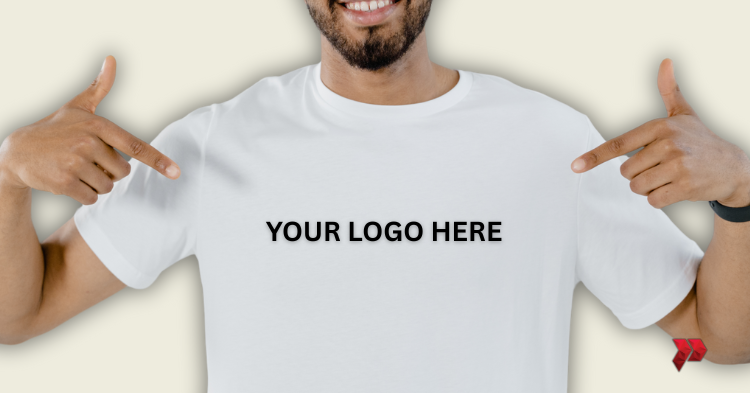When it comes to promotional products, it’s not just what you give that matters — it’s how you present your brand on it. Creative placement of your logo can turn a basic giveaway into a stylish, memorable, and high-value item. But here’s the catch: being creative doesn’t mean being careless.
Many brands make the mistake of going overboard or choosing placements that compromise legibility or usability, which can hurt your campaign instead of helping it. To help you avoid those pitfalls, here are five expert tips on how to get creative placement right — ensuring your branded products delight recipients and enhance your brand image.
Why Creative Placement Matters
Before diving into the tips, let’s quickly recap why creative placement is so powerful.
Instead of defaulting to a big, centered logo, thoughtful placement — like a subtle cuff embroidery on a hoodie, a discreet logo on a tote bag corner, or an etched mark on the underside of a mug — makes your product feel more stylish and premium.
Creative placement elevates your product to look more like a retail item than a piece of “swag,” increases its perceived value, and makes your brand more memorable. But this only works if done well. Here’s how to make sure your creative choices are smart, strategic, and effective.
1. Keep It Legible
No matter how creative you get, your branding still needs to be clear and recognizable.
Some brands shrink their logos to fit in an unconventional spot or print on textured materials where the logo becomes hard to see. That can be a big mistake because if recipients can’t read it, you’re losing the whole point of branding.
Best practices for legibility:
- Choose a high-contrast color combination that stands out on the product material.
- Avoid overly busy or textured areas that can obscure your logo.
- Keep your logo’s proportions appropriate for the space; don’t distort it to fit.
- Test print on the actual material before full production.
For example, if you’re placing a logo on the inside rim of a mug — a very creative idea — make sure the print is bold enough and in a color that stands out when the recipient finishes their drink.
Remember: subtle does not mean invisible.
2. Match Placement to Product Use
One of the biggest mistakes brands make is placing logos where they’re likely to go unnoticed or wear out quickly. To get creative placement right, think carefully about how the product will be used and handled.
For example:
- If you put your logo at the very bottom of a water bottle, it might never be seen while in use.
- A logo on a tote bag strap is creative, but if it rubs against clothing, it may fade faster.
- A logo inside a notebook cover might only be noticed once — but that could still be enough if it fits your brand’s intention.
Before deciding on placement, imagine yourself as the recipient: how will they interact with the product? Where are their eyes naturally drawn? Will the logo placement feel like a pleasant surprise — or will it just be missed?
Consider the durability of the placement area too. If the spot is prone to wear and tear, you may need to use a different printing technique or reinforce it.
3. Stay On-Brand
Creative doesn’t mean random — it needs to feel like a natural extension of your brand personality.
If your brand is sophisticated and minimal, then a subtle, elegant placement is likely to resonate with your audience. If your brand is youthful and playful, you might be able to experiment with bolder, more unexpected spots.
For example:
- A luxury jewelry brand might place its logo as an embossed mark on the inside of a gift box lid — understated yet refined.
- A tech startup targeting Gen Z might print its logo inside the hood of a sweatshirt — a hidden but fun touch that sparks delight.
When considering creative placement, ask yourself:
- Does this feel consistent with our brand voice and visual identity?
- Will our audience find it clever and appealing — or confusing?
- Does this placement reflect the quality and care we want associated with our brand?
Align your creative choices with your brand guidelines and customer expectations, and you’ll avoid alienating your audience.
4. Request Proofs and Samples
Even if the concept sounds great on paper, it may not translate well on the actual product. That’s why it’s essential to request digital proofs and physical samples before committing to full production.
Proofs allow you to:
- Check whether the logo is legible and looks good in the intended spot.
- Assess color accuracy and contrast on the material.
- See how the placement works with the shape and functionality of the product.
When possible, order a small batch or sample piece to evaluate it in real-world conditions. Have a few people (preferably from your target audience) look at it and give feedback.
This step can save you from costly mistakes and ensure you’re delivering a polished, professional product that recipients will love.

5. Don’t Overdo It
Creative placement is about quality, not quantity. One or two thoughtful placements are enough — you don’t need to plaster your logo all over the product just because you have space.
Over-branding can make the product feel cluttered, cheap, and overly promotional — which is exactly what you want to avoid.
For example:
- On a tote bag, a small corner logo or a subtle strap imprint is better than logos on both sides, the straps, and inside the pocket.
- On a hoodie, one tasteful embroidery on the cuff is more effective than printing the logo across the chest, down the sleeve, and on the hood.
Let your product breathe. Creative placement works because it’s unexpected and understated — which gives your brand a more sophisticated and intentional feel.
Final Thoughts
Getting creative with your logo placement can take your promotional products from forgettable freebies to sought-after items that recipients use and cherish. But creativity without strategy can backfire.
To ensure your creative placement delights your audience and strengthens your brand:
- Make sure your logo remains legible and clear.
- Consider how the product will be used and seen.
- Align the placement with your brand personality and audience expectations.
- Always review proofs and test samples before going all in.
- Keep it simple — one or two well-thought-out placements are all you need.
By following these five expert tips, you can strike the perfect balance between creativity and effectiveness — creating branded merchandise that looks great, feels premium, and leaves a lasting impression.





